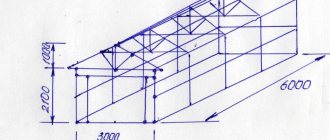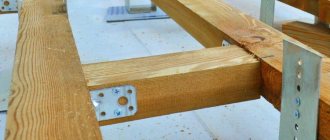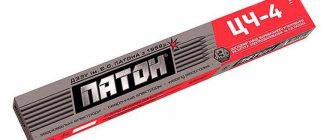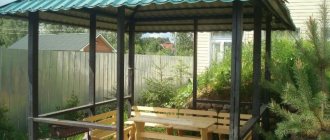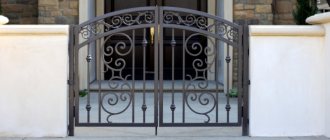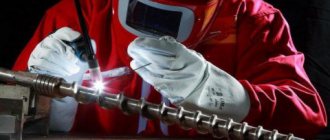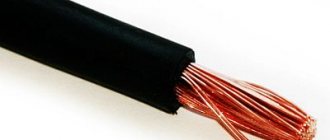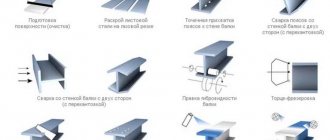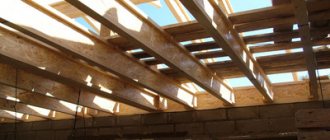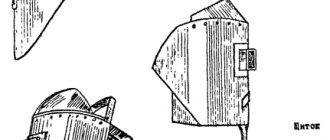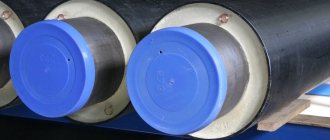Home / Welding technique
Back
Reading time: 17 min
0
302
- Welding requirements
- Drawings of metal structures
- Welding technologies and their features
- Automatic welding technology for metal structures
- Types of welded joints in metal structures
- Features of creating welded structures of any type.
- Cost of welding metal structures
- Innovative welding technologies
- Installation technology.
- Final assembly.
- Standardization of assembly and welding operations of metal structures
- Safety standards for assembly and welding of metal structures
- When is welding required?
- Prices for welding work
Welding requirements
There is a classification of welded structures and, depending on this, different requirements are placed on them. The general definition from all the variety is that these are structures made by welding.
However, it is more convenient to divide it into different types:
- according to their intended purpose - aviation, ship, carriage, construction, etc.;
- according to the thickness of the elements being connected - thick-walled and thin-walled;
- according to the method by which the blanks are produced: sheet, profile, stamped, cast;
- by materials: steel, titanium, aluminum and other metals.
Each of these options has its own characteristics when connecting elements by welding. These recommendations are usually indicated on the drawings and in the technological map.
Welded metal structures after completion of their connection must have strength and reliability. Such requirements impose great responsibility on the welder to comply with certain requirements when carrying out this difficult process.
Particularly great demands are made when welding critical metal structures occurs. The quality of their implementation will determine how great the possibility of destruction of the entire object is, which is unacceptable.
Only highly qualified welders have the right to perform such work. The result of welding of such structures must be subjected to control.
The characteristics that welded metal structures used in construction must have are set out in GOST 27772.
Also included in the guidance documentation is the regulatory document SNIP II 23-81. The requirements set out in these documents relate primarily to the activities of professional welders, but when deciding to carry out such work yourself, it would be a good idea to familiarize yourself with them.
When manual welding, one should be guided by the requirements of GOST 5264-80, and if it is carried out in shielding gas, then GOST 14771-76. Much attention in the existing regulatory documentation is paid to preparing the edges of the parts to be joined before starting welding, which guarantees the creation of a high-quality connection.
Welded structures must have the lowest possible shrinkage stresses, as well as minimal deformations. This can ensure welding of structures while maintaining the stability of the selected mode.
The spread of current and voltage values should not exceed 5%. To meet these requirements, drawings of welded structures are made, and a special map describes the technological process of welding metal structures.
Nodes
Welded metal structures are used much more often than bolted rolled metal . They are subject to requirements in accordance with SNiPs, which are in force at a specific production site. For example, the reliability of the unit during the construction of bridges should be higher than during installation work on the chimney of a boiler room.
At the stage of developing a work organization plan, engineers draw up a technological map for welding work on metal structures, which indicates the optimal method of joining individual elements. In this case, it is necessary to be guided by the requirements of GOSTs. The final version is included in the estimate. The ideal conditions for welding are the following:
- The vast majority of seams are made in a horizontal position.
- Welding is performed by special robots with the function of monitoring operating parameters. The percentage of manual work is minimal.
- When connecting individual elements, butt or fillet welding methods predominate.
Drawings of metal structures
The manufacture of welded structures should be carried out in accordance with the requirements specified in the drawings on them. Drawings for welded metal structures have their own characteristics, so you need to be able to not only draw them up correctly, but also read them. To do this, it is necessary to study the symbols used on these design documents.
At the initial stage of development, general drawings are created, united by the name “KM”, which stands for metal structures. They indicate welding of structures in general form.
At the final stage, a set of “KMD” drawings is produced - detailed metal structures, which include all the drawings of each part involved in this type of connection.
“KM” is the basis on which the drawings included in the “KMD” kit are developed. Providing “KM” is necessary in order to obtain permission to build a future facility. They will be used for future welding of building structures.
When drawing up drawings, you should be guided by the standards set out in GOST 2.410-68, which clearly outlines the rules by which drawings for metal structures should be made.
High-quality assembly and welding of metal structures directly depend on competent drawing up of drawings. The general view gives an idea of what the structure should look like after welding.
The drawings contain technical data in special tables that serve as a guide for proper welding.
You need to start reading the drawings in a certain order. First, you should familiarize yourself with the first drawing of the kit to get a general idea of the work ahead.
Then you need to familiarize yourself with the “list of elements”. For each part, called an element mark, it contains information about its section with a small sketch that can show individual dimensions, for example, a step.
The “Pos” column indicates the position number of the part in the drawing. Nearby in the “Composition” column there is an abbreviated designation of the profile that the section of the part has according to the rules of their symbolic designation in accordance with the requirements of GOST 2.420. Next come the columns that indicate the effort and grade of steel.
This app is required. The special significance of the statement lies in the fact that only it indicates in detail the names of the profiles, for example, “I-beam No. 14.” For such complex metal structures as trusses and gratings, a sketch will not be enough and separate drawings are produced for them.
A valuable detail for the welder in the general drawing may be an indication of the brand of electrodes that are recommended for installation and welding of metal structures.
The drawings also conventionally show seams in accordance with the requirements of GOST 21.504-2005. The designation may include parameters such as seam length and leg size. Different types of seams use their own conventional images.
Information about profiles is placed on special callouts.
Next to the designation, information about the number of parts used in the design is placed through a dash.
This can be important when using a large number of similar parts, for example, on truss units.
Welding technology. Types of welding
Welding as a method of obtaining a permanent connection of materials opens up wide opportunities for reducing the labor intensity of manufacturing and installation of structures, expands the possibilities of using rational types of sections in structures, allowing to significantly reduce metal consumption; when creating welded structures, a comprehensive solution of scientific design and production problems must be provided, including the development of good welded steels, methods for calculating and designing welded joints and assemblies that most fully meet their actual operation, the creation of highly productive welding processes, equipment and materials, as well as the search for new structural forms that meet the requirements of high manufacturability and factory readiness of structures.The topic of welding in the manufacture and installation of building structures is very extensive. The variety of building metal structures is so great, and the specifics of their design, manufacture and construction are so different from each other that even superficially, in the allotted time, it is not possible to talk about the latest achievements in this area, for this reason our material is presented with information about steels, used in welded building structures in the CIS and abroad, recommendations for the selection of butt and corner joints, widely used in various structures. And then, the main, most important issues of design, manufacture and installation of beam structures and deck structures of predominantly metal road bridges are considered.
Why did we stop at highway bridges? First of all, this type of building structures is widespread throughout the world. In the world practice of welded bridge construction, there are great scientific and technical successes in the field of design, manufacturing, installation and welding of road and city bridges. Around the world, about 50...60 thousand tons of bridge structures are produced annually. New developments in arc welding technologies and materials are used in the manufacture and installation of bridge structures. Of course, there is a lot of new things in reservoir engineering, high-rise civil engineering, antenna structures, construction of offshore stationary platforms, etc. However, this can be addressed if additional time is allocated.
For specialists, material on characteristic defects in building structures and recommendations for their elimination will be of practical interest. The material is based on the use of regulatory documents and experience in design, manufacturing and installation in Ukraine, the CIS, advanced countries of Europe and America.
MATERIALS
Rolled products used for welding metal structures must meet the requirements of the relevant state standards or technical conditions for its supply. When choosing grades of rolled steel, one should take into account the degree of responsibility of the structures of buildings and structures, as well as the conditions of their manufacture and operation in accordance with SNiP II 23-81. "Steel structures"
The main material for welded metal building structures is steel, supplied in the form of sheets, rolls, various shaped, rolled, bent and bent-welded profiles, pipes and periodic profiles for reinforced concrete structures. In Ukraine, rolled products produced in accordance with various GOSTs and specifications are used, among which GOST 380-94 and the corresponding Ukrainian DSTU 2651-94 “Ordinary quality carbon steel” should be noted. Rolled products made of high-strength steel - GOST 19281-89. Low-alloy structural steel for bridge construction - GOST 6713-91.
GOST 27772-88 “Rolled products for building steel structures” deserves special attention. This standard applies to hot-rolled shaped (angles, channels, I-beams), sheet, wide-band universal rolled products and roll-formed profiles made of carbon and low-alloy steel intended for building steel structures with welded and other connections.
Rolled high-strength steel (GOST 19281-89) has nine strength classes. The basic chemical composition for each strength class is given, as well as a list of steel grades recommended for various strength classes and thicknesses of shaped, long and sheet products. A rolled steel manufacturer can provide a strength class with several grades of steel, which creates certain technological difficulties for the consumer. Rolled products are produced in hot-rolled, heat-treated condition and after controlled rolling in accordance with the order. In the absence of instructions, the manufacturing method is determined by the manufacturer.
At the consumer's request, rolled products are supplied with a guarantee of weldability. For steel of strength class 390, the carbon equivalent C e should be no more than 0.49, and for steel of strength class 440 - C e should be no more than 0.51.
Rolled products of strength classes 265, 295, 315 (thickness over 20 mm), 325 (thickness over 10 mm), 345, 355, 375, 390 and 440 can be supplied with increased resistance to atmospheric corrosion. The letter D is added to the designation of the strength class (for example, 265D, 295D).
Rolled products of strength classes 315 and 345 are manufactured using normalization or controlled rolling, strength classes 390, 440 using thermal hardening or controlled rolling.
Depending on the requirements for impact bending tests, rolled products are manufactured into 15 categories. The impact strength of thick-plate and broad-band universal rolled steel KCU and KCV is regulated for various strength classes.
GOST 27772-88 “Rolled steel for building steel structures” practically provides all the necessary requirements for metal for ordinary and special welded metal structures. The manufacturer guarantees weldability and a high level of mechanical characteristics (not lower than 0.95). Each strength class corresponds to one grade of steel. According to GOST 27772-88, steels have the letter C in their designation. Example: C235 - weldable with a standard yield strength of 235 MPa. According to GOST 27772-88, shaped rolled products are produced from steel S235, S245, S255, S275, S285, S345K, S375, sheets, universal rolled products and bent profiles are made from steel S235, S245, S255, S275, S285, S345, S345K, S375, S390, S390K, S440, S590, S590K.
Rolled products from steel C255 with a mass addition of manganese 0.8-1.1% and silicon 0.15-0.30% are made with a thickness of more than 30 mm, from steel C285 of the same chemical composition - with a thickness of at least 16 mm. It is allowed to produce rolled sheets of steel C390 with the chemical composition of steel C345 by the method of thermal improvement with special heating, as well as by the method of thermal hardening with rolling heating to produce shaped steel with a flange thickness of up to 12 mm inclusive of steel C345 and C375 with the chemical composition of steel C245 and C255. In this case, the letter T is added to the steel designation, for example S390T, S390DT. Impact strength after strain aging is determined according to GOST 7268-82 on samples with a U-type concentrator at a temperature of 20 °C. GOST 27772-88 is the main one when choosing materials when designing building structures according to SNiP II-23-81. We examined the state of the issue of choosing a material for metal structures, regulated by domestic regulatory documents.
Calculation and design of metal building structures in Germany are carried out according to DIN 18800 (part I). Since September 1993, the introduction of uniform European standards for steel metallurgical products has begun in most countries. In particular, the standard EN 10113:1993 “Hot-rolled products from weldable fine-grained construction steel “Warngewalzte Erseugnisse aus schweissgeeigneten Feinkornbaustahlen” is being implemented in construction. This standard was developed by the Technical Committee ECISS/TCIO "Building steels, quality standards" and adopted by the European Committee for Standardization CEN 1993-03-05.
The EN 10113 standard is being implemented in the European Economic Community countries of Belgium, Denmark, Germany, Finland, France, Italy, Luxembourg, the Netherlands, Austria, Sweden, Spain and England. The standard provides for the supply of sheets < 63 mm thick and plates < 150 mm thick from hot-rolled weldable structural steels in a state of thermomechanical processing. In table Figure 3 shows the chemical composition of the ladle sample. Rolled products S 275 and S 355 of this standard are unalloyed high-quality steel. Rolled steel S 420 and S 460 are alloyed in accordance with EN 10020.
The mechanical properties of rolled products are presented in Table 4.
The tensile strength Rm is presented in a wide range for each brand. This is achieved by appropriate heat treatment. The yield strength ReH has fixed values for a certain range of thicknesses. The assessment of the toughness of rolled metal EN 10045-1 is carried out on samples with a sharp notch - KCV and is presented in average values of impact work at different temperatures. In contrast to domestic standards, which provide the minimum permissible values of impact strength along the rolled product, EN 10113 presents the average values of the impact work along the rolled product (Table 5) and across the rolled product (Table 6). For rolled products from S 275 to S 460 there are no requirements for impact performance at -30 °C and below. Let's consider an example of the designation of rolled steel. Thermo-mechanical rolling steel with an established minimum value of the yield strength of 355 N/mm2 and an established minimum value of impact work at a temperature of - 50 ° C is designated EN 10113-1-S355ML Analyzing the requirements of the standards of Ukraine and Europe, it should be noted that Europe has requirements for the ductility of rolled products higher requirements. For welded structures, the main requirement is weldability. The assessment of these properties, as is recognized throughout the world, is carried out through carbon equivalent.
In domestic standards GOST 27772-88, this indicator has the following meanings. For steel S390 and S390K, Se> 0.49%, steel S440 - no more than_51%. P»I Obviously, rolled products according to EN 10113 have improved weldability. During the manufacture and installation of metal structures, fewer problems arise with the formation of cracks. For the manufacture of metal structures of welded spans in the USA, a number of carbon, low-alloy and medium-alloyed ordinary and high-strength steels with a thickness of 3...60 mm, strengthened by heat treatment, including rolling heating, are used. A little about the strength properties of metal used in the calculation of metal structures. Building structures in Ukraine are calculated based on limit states. The calculated resistances are used in the calculations. The calculated resistances based on the yield strength for steel structures calculated according to the limit state are obtained by dividing the yield strength of steel Ryn, taken equal to the value of the yield strength according to state standards and technical specifications for steel by the reliability factor for the material Ym.
Ry = Ryn / Ym When welding metal structures, the correct application of welding patterns and the order of welding seams is of great importance. When welding especially thin-sheet products, a big problem is maintaining the correct shape and dimensions of the structure; for this purpose, special welding schemes are used, which indicate the sequence of seams and structural units to be performed. Bridges are the most prominent representatives of building structures. The global volume of bridge construction exceeds all other types of metal building structures. The most significant advances in the field of bridge structures have been achieved in the USA, Japan, Germany and France.
The main types of welding in workshop conditions are automatic under a layer of flux and in shielding gases (both automatic and mechanized). These types of welding in Japan account for up to 80% of the mass of deposited metal. However, some companies still use (up to 65%) manual arc welding with stick electrodes. In Japan, in recent decades, an average of 2...3 km of bridges have been built per year, of which approximately 35...40% are metal bridges weighing 15,000... 18,000 tons and about 50% are reinforced concrete (mainly monolithic).
In recent years, manual welding has begun to be replaced by mechanized welding with flux-cored wires with a diameter of about 2.0 mm in a mixture of shielding gases. Mechanized welding with gas shielded flux cored wires is used for butt joints in vertical and overhead positions, as well as for fillet welds inside box elements. In the lower position, with a significant thickness of the metal, multilayer welding into a narrow groove with flux-cored wire is used. In workshop conditions, new designs of welding machines are used: portable small-sized and complex multi-electrode large-sized and automated installations.
At installation for welding in the lower position, automatic submerged arc welding is very widely used and, in small quantities, mechanized welding with small diameter flux-cored wires without gas protection.
There is information that at one time in the United States electroslag welding was used to make vertical installation connections. However, such information is absent in recent publications, apparently due to the destruction in some cases of such connections during the operation of bridges at subzero temperatures.
In the USA, the following methods are permissible for welding both in workshop and in installation conditions: manual arc welding with stick electrodes; automatic submerged arc welding; electroslag welding; mechanized welding with solid wire in shielding gases; the same with flux-cored wire in protective gases; mechanized welding with self-shielding flux-cored wire; electrogas welding with solid wire in shielding gas of vertical joints with forced formation. Welding work during installation is permissible at ambient air or metal temperatures not lower than -18 °C. The metal temperature is controlled near the weld. If the temperature of the base metal is lower than - 18 ° C, then the metal being welded must be preheated at a distance equal to the thickness of the metal being welded, but not less than 76 mm in all directions from the welding site. For steel grades A514, A517 and A852, the maximum preheating temperature should be 205 °C for thicknesses up to 38 mm inclusive and 230 °C for larger thicknesses.
When welding steels of two different grades, the preheating temperature is set according to the higher-strength steel. When the temperature of the base metal is from 0 to -18 °C, it is necessary to heat the metal to 21 °C and maintain this temperature throughout the entire welding period.
Impact strength is usually determined on samples with a sharp notch (Charpy type) in the center of the weld. This is explained by the fact that the steel certificate always indicates the limit of heat input per unit length, and therefore welding modes are set taking into account these data and should not have a negative impact on the HAZ metal. In some cases, by decision of the chief engineer of the project, the impact strength is checked on samples with a notch in the coarse grain zone. The sample testing temperature is set in the range from -18 to -40 °C, and the minimum impact strength value is from 20 to 34 J/cm2. For the case of electrogas and electroslag welding, eight samples are tested. The minimum and maximum results are not taken into account, and the average value is determined from the remaining results. However, none of the eight samples should have results below 2/3 of the norm.
For all other welding methods, five samples are made and tested, and the test results of only three samples are taken into account.
If the working forces are directed along the seam, welding can be done on the remaining pads with a thickness of 5...9 mm, depending on the welding method. It is also possible to install the remaining shims in joints experiencing compressive stress.
WELDED CONNECTIONS OF BUILDING STRUCTURES
Welded joints are classified according to various criteria. The most common of these features are the following: the geometry of the junction of the elements being connected, the type of welds used, the welding method, working conditions, the thickness of the elements being welded, the materials being welded.
In the production of building structures, electric arc welding is mainly used. The main types, structural elements and dimensions of welds and connections are regulated by the following regulatory documents: GOST 8713-79 and GOST.11533-75 - for welds made by automatic and semi-automatic submerged arc welding; GOST 14771-76 - for seams made by welding in shielding gases; GOST 5264-80 and GOST 11534-75 - for seams made by manual arc welding.
In some cases, electroslag welding GOST 15164-78, resistance welding GOST 15878-79 and arc spot welding GOST 14776-79 are used.
Depending on the type and geometry of the junction of the elements being connected, the specified standards for arc welding provide for four characteristic cases: - butt connection, when the elements being welded lie in the same plane; - corner connection, when two parts with their end surfaces are connected at a certain angle relative to each other; - T-joint, when one part is adjacent to another with its end surface; - lap joint, when the welded elements overlap each other. Let's consider some of the main features of the design and manufacture of welded joints of building metal structures. Butt joints
Welded butt joints of sheet parts should be made straight with full penetration and using lead strips.
Under installation conditions, one-sided welding with back welding of the weld root and welding on the remaining steel pads is allowed. When using the remaining pads, the requirements must be met. The lining must be fastened from the side of the welded edges. When manual welding, the gap in the assembled joint should be 7±1 mm. Compliance with these requirements will prevent the appearance of “whisker” cracks. The thickness of the remaining lining is selected such that, under the established welding conditions, it will not burn through. During manufacturing and installation, welding of butt joints is carried out, as a rule, using mechanized welding methods; the best results occur when using automatic submerged arc welding (AF).
In table Figure 1 shows the most typical butt joints used in welded building structures. Joints without cutting edges are performed with element thicknesses up to 16 mm. If the sheets being joined have a thickness of more than 16 mm, it is recommended to cut the edges either double-sided [2] or single-sided. The joint parameters and modes are chosen such as to ensure complete penetration. Joints 1 and 2 are made with a difference in sheet thicknesses of no more than 4 mm.
If there is a significant difference in thickness, joints of type 3 (with one-sided slope) or type 4 (with two-sided slope) are recommended. In bridge construction, it is customary to use a slope of 1:8 for tension elements, and 1:5 for compressed elements. Slopes are made by milling or gouging in compliance with the requirements for surface roughness. Table 1
Recently, in bridge construction practice, structural elements in the form of a package of sheets have begun to be used. In particular, during the construction of a motor transport overpass in the Odessa seaport. In a number of spans, the lower chords were made of 40+40 mm packages; 40+32 mm; 40+24 mm. Domestic regulatory documents do not contain recommendations on the design of installation joints. The German standard DIN 18800 recommends solutions 5 and 6 (table). In the joint area during manufacturing, a small cutting is made along the plane of contact of the sheets, followed by welding and cleaning of these areas. The thickness of the deposited metal is 7-8 mm. During automatic welding during installation in this area, complete penetration of the monolithic zone should not be allowed. Corner joints In the production of building steel structures, the main volume of welding work is performed on fillet welds. These seams in prefabricated structures account for more than 90% by weight of the deposited metal, of which about 40% are design seams, the dimensions of which are established during design in accordance with strength calculations, and about 60% are structural seams. Therefore, rational design of connections with fillet welds serves as a great reserve for improving the quality and efficiency of welding production. When designing welded joints, one of the elements of which experiences tensile stresses along the thickness of the sheet, design solutions for corner and T joints should be taken with a reduced risk of layered cracks. For this you need (Fig. 1).
— abandon the use of a one-sided fillet weld and switch to a double-sided one, minimizing the concentration of deformations at the apex of the weld (Fig. 1, a);
Figure 1 - in cases where this is impossible, use joints without edge preparation with the minimum possible volume of deposited metal instead of joints with full penetration (Fig. 1, b); - use under static loads joints with edge grooves (h ^ t/3) with incomplete penetration (Fig. 1, c) - if possible, avoid the use of a V-shaped groove, using a K-shaped groove (Fig. 1, d); — in all cases where possible, use T-joints instead of corner ones (Fig. 1, a); An important factor when welding critical structures is the correct selection of welding modes, which leads to uniform filling of the seam and reduces residual stresses. The influence of welding modes on the shape of the seam is shown in (Fig. 2).
Figure 2 During the welding process, it is necessary to control the welding speed so that it is moderate during manual welding within 20 m/h.
WELDED ASSEMBLY
Welded joints of building structures are formed by butt and corner joints. When designing, it is necessary to strive to create the most favorable conditions for making welded connections in assemblies (accessibility, lower position, etc.), for the use of automated or mechanized welding methods - as a guarantee of quality. BeamsWhen manufacturing beam structures, you should pay attention to the relative position of the seams (Fig. 2). In accordance with the requirements of regulatory documents, the minimum distance between two parallel seams must be at least 10 b, where b = thickness of the thicker material.
Figure 3 Installation connections of beam or box structures are decided based on the technical capabilities of the installation organization and the work design. In Russia, welded assembly joints are widely accepted. The design of such a joint was developed at the IES named after. E.O. Paton and was first used in 1953 in the spans of a road bridge across the river. Dnieper in Kyiv - bridge named after. E.O. Paton. The joint has one seam along the lower chord, an insert along the walls of the beam and an insert along the upper chord. This joint design makes it possible to successfully use automatic submerged arc welding to perform butt welds in the lower position along the lower and upper chords and automatic welding of vertical wall seams using flux-cored wire with forced formation.
In the main box-section beams, a combined joint design is used. To allow passage of special mouthpiece extensions, cutouts are made in the wall. If possible, inserts are used along the upper belt. Orthotropic slab for road bridgesSteel orthotropic slab is the main element of modern metal bridges. The widespread introduction of automatic and mechanized welding has made it possible to create modern design solutions that are industrial in production and installation and economical in steel consumption. The result of more than 40 years of development, the modern orthotropic slab design consists of steel sheets supported by longitudinal ribs and transverse beams or diaphragms. An orthotropic steel slab is used for the roadway, which is also the upper chord of the main beams, and for the lower chords of box spans. Similar sheet structures reinforced with a set of longitudinal and transverse ribs are widely used in shipbuilding.
Over the course of many years of development of the orthotropic slab design, longitudinal ribs were used in a variety of forms: with open and box-shaped cross sections, welded, rolled, formed by dissolving complex rolled profiles, etc. Open strip ribs have a thickness of 12-16 mm. Box-section ribs are made with a thickness of 5... 10 mm. Experts give preference to orthotropic slabs with longitudinal box-section ribs as having structural and technological advantages and being more economical than slabs with strip ribs.
The main advantage of the longitudinal ribs of the box section is greater torsional rigidity, which determines the spatial operation of the structure and the increased effect of distributing the wheel load in the transverse direction. The technological advantage of trapezoidal box-shaped ribs is the reduced amount of welding work. The walls of box-shaped ribs are welded to the slab sheet (t = 12... 14 mm) only from the outside using seams with small legs; therefore, the length of the welds when welding such ribs is 2 times, and the mass of deposited metal is 4 times less than for slabs with open ribs. Due to reduced heat input during welding and increased spatial rigidity, welding deformations are reduced. The listed advantages have a decisive influence on the choice of box fins.
DESIGN AND TECHNOLOGICAL FACTORS AFFECTING THE STRENGTH OF WELDED ASSEMBLY DURING MANUFACTURE AND OPERATION, METHODS OF THEIR ELIMINATION
In engineering practice, two principles are valid: local fragility (unwelded cracks, holes, cutouts, etc.) and local strength, the so-called hard points (welding of ribs, overlays, gussets, bolts, etc.) lead to general fragility. The reason is as follows: the force flow is “attracted” to more rigid places and “repelled” from places with less rigidity, therefore any part of the structure that is characterized by rigidity causes stress concentration and is dangerous. Rational design of welded assemblies allows the power flow to be evenly distributed across the cross-sections of the elements, i.e. eliminate or reduce the impact on the strength of concentrators, as well as residual stresses and thermal effects of the welding arc, and thereby increase resistance to the formation of brittle and fatigue cracks.
The appearance of cracks is facilitated by a decrease in the ductility of steel due to aging, i.e. simultaneous effects on its properties of aging and plastic (thermoplastic) deformations. Aging is a decrease in the ductility of steel caused by the decomposition of retained austenite, which at normal temperatures can last for years, and at 100...500 °C - for several minutes. Plastic deformations in the manufacture of structures are caused by bending, straightening, rolling, cutting with scissors, piercing holes, cutting in dies, expansion and subsequent shrinkage of the metal due to local heating by a welding arc or oxygen gas flame. In all cases, the values of plastic deformations in the zones of stress concentrators are much greater (concentration of deformations), and, consequently, the embrittlement of steel is greater. During operation, concentration of deformations occurs at the locations of structural and technological concentrators under the influence of operating stresses.
There are three types of strain aging: dynamic, when plastic deformation and aging of the metal occur simultaneously at 100...500 °C (heating and cooling of the metal of welded joints near various concentrators during welding), when free shrinkage during the cooling process is difficult, when straightening and bending structural elements in the range 100...500 °C; artificial, when plastic deformation occurs at normal temperatures, and aging occurs with subsequent heating to 100...500 ° C (straightening, bending, cutting with scissors, punching holes and subsequent heating of the deformed areas by welding or oxygen gas flame); natural, when plastic deformation and subsequent aging occur during natural processes (straightening, bending, cutting with scissors, punching holes without subsequent heating).
Embrittlement is most significant with dynamic aging, lower with artificial aging, and even lower with natural aging. Plasticity drops especially sharply at the tops of the concentrators, where deformations (and aging) are greatest, therefore, in welded joints, cracks appear in the area where various technological defects or structural concentrators are located. In practice, there are many different types of welded assemblies, which, depending on operating conditions, lead to accelerated appearance of cracks or serious accidents.
Technological defects (lack of penetration, cracks, tears, delaminations and undercuts) during welding can become concentrators of thermoplastic deformations in cases where the metal near the defect is repeatedly subjected to local heating; when free shrinkage of a seam with a defect is difficult or shrinkage occurs in a rigid contour.
This may occur if the defect is located: a) in the area of closure of circumferential seams when butt welding pipes or other closed sections; b) in the area of stage closure with the reverse-stage welding method; c) intersecting seams (in the case when the defect is located in the seam made first); d) in the metal of the edges of elements connected by a seam that have tears, cracks, delaminations; e) in places of poor-quality welding of defective areas; e) in connections made in a rigid circuit and in other cases.
In practice, there are welded assemblies in which thermoplastic deformations are caused by structural stress concentrators. In connections, it is necessary to increase the gap between the ends of the elements by at least 50 mm, undercook the seams to the gap by at least 30 mm, or pre-weld the gap with full penetration.
When welding diaphragms and stiffeners, it is recommended to make bevels or cutouts on the parts. In such cases, the possibility of surfacing a weld on a narrow gap is eliminated. In other structures, local embrittlement of steel is caused by a volumetric stress state that occurs when intersecting seams are applied, directed along three (or more) spatial axes. To eliminate such cases, it is recommended to make a cut or bevel in one or more elements. Deformation embrittlement of the weld metal is aggravated by the ingress of hydrogen or carbon into it. Intense saturation of the seam with hydrogen during welding occurs if wet flux, electrodes with a moistened coating are used, or if there is moisture, rust, or scale on the welded edges. Carburization of weld metal is possible when cutting edges for welding with a carbon electrode (air-arc cutting) without subsequent removal of a 1 mm thick carburized layer from the surface, as well as if there is oil or paint on the cutting surface.
The ductility of steel depends on temperature: the lower it is, the less ductility of the steel. If the metal of the welded joint has been embrittled due to thermoplastic deformations, saturation with hydrogen and carbon, then in some cases it is enough to lower the temperature of the structure without applying an external load so that a crack will form in the weld under the influence of residual stresses (so-called spontaneous fracture).
Welding technologies and their features
Initially, it is worth noting the classic method of welding metal products, familiar to many, using an electric arc or gas flame as an energy source. The technology itself can have the following format:
- Manual - in this case we are talking about the need to perform all actions by a welder. It is not only responsible for forming the seam and controlling the entire process, but also ensures the supply of the electrode to the working area. Welding can be simple, submerged arc or soldering. But achieving high quality of work and corresponding speed of its implementation with this approach is very problematic;
- Automatic - here welding of metal structures to order takes place without any human intervention. The work is preceded by a comprehensive setup of the welding unit, taking into account the specified technological conditions. But each automation has a number of certain limitations that should be taken into account before starting work. Such devices are relevant for mass production, and their use significantly reduces the cost of the finished product;
- Semi-automatic – this metalworking method also has its own nuances. The seam is applied manually, but a special mechanism is responsible for feeding the electrodes or wire. The technology allows you to achieve higher productivity of the work process, without compromising the quality of the formed seam. It is this method of welding metal structures that is in greatest demand and demand today.
Important! Although the matter is not limited to the welding methods described above.
Technologies do not stand still, production is developing at a very active pace, and the introduction of innovations in technological processes does not pass without a trace.
That is why several more welding methods were invented. Each welding of metal structures has its own characteristics, distinctive properties and has undoubted advantages. The following technologies are most in demand:
- Thermite welding - welding by this method involves treating the working surfaces at the site of the intended seam with a special mixture. It takes its place during the combustion process. The undoubted benefit of the technology lies in the possibility of treating cracks and other defects. In this case, the technique of “influx” of metal is used;
- Plasma - in this case we are talking about the use of ionized gas with its preliminary passage between two electrodes. The role of the electric arc is assigned to the gas itself, but the effect is undoubtedly higher. Melting of the metal takes place under the influence of a superheated gas flow, and the thickness of the workpiece does not have any determining value;
- Electron beam - this method of joining workpieces allows the formation of seams with a depth of within 20 cm. But this becomes available only if the ratio of the depth of the beam to the width of the formed seam corresponds to 20:1. But here you cannot do without a vacuum environment. That is why the scope of use of such technology is significantly limited to a number of highly specialized areas of human activity.
Assembly of parts
Welding of metal structures prepared in the form of separate prefabricated units is carried out in accordance with GOST 5264-80, which defines the principles of installation based on the electric arc method.
In accordance with the provisions of this document, the procedure for preparing a metal structure for assembly is determined, including methods for supplying its individual elements to the welding site.
The fusion modes of individual components of metal structures are established, which are selected in accordance with the data specified in the previously compiled technological map for this type of welding work.
The final installation of the metal structure is carried out in a certain sequence, including preliminary cleaning of the edges and the areas closest to them. In this case, the fitting of elements for welding is carried out either using mechanical means or through gas cutting.
When assembling an already prepared product, they are guided not only by the drawings, but also by the previously mentioned technological maps. In addition to the operating modes and assembly order, they must indicate methods for fastening parts, as well as methods for monitoring assembled products.
In the process of preparing metal structures, it should be assumed that when welding them, an electric arc is supposed to be used, the melting point of which can reach 7000 °.
The peculiarities of this method of assembling complex objects include the fact that special welding devices are used in its implementation.
Automatic welding technology for metal structures
The work process in this type of welding work is completely mechanized. From a physical point of view, metal is melted due to a high-temperature electric arc.
The torch flame acts on the welding object - the wire placed in the direction of the seam. The arc is covered with a granular blanket - a flux mixture. The mixture and wire melt in the weld pool under high temperature.
An elastic film formed around the weld pool protects the metal and welding arc from exposure to air, which contributes to the formation of an oxide film that negatively affects the quality of the weld.
How to ensure correct assembly of the structure
To obtain a reliable design, the following rules must be observed:
- when choosing a rental, it is prohibited to deviate from the requirements of the project;
- it is necessary to follow the sequence of installation work;
- each element must be in the place specified in the drawing;
- strictly observe the size of the gaps and the working angle of the joint;
- Before carrying out welding work, it is necessary to carry out the preparatory procedures provided for in the technical documentation.
Types of welded joints in metal structures
The classification of welded joints depends on the following characteristics:
- location of the connection of two elements of the metal structure;
- type of weld used;
- welding technologies used when connecting parts;
- conditions for welding work;
- workpiece thickness;
- brand of alloy from which metal structural elements are made.
The classification of connections depending on the location of the parts being connected includes four types:
- Butt joint, in which all workpieces are connected in one plane.
- Overlapping, with the edges of the workpieces overlapping each other.
- Angular – involves connecting elements of metal structures at a certain angle.
- T-joint, in which parts are welded to each other with their end surfaces.
To make butt joints, penetration is used along the thickness of the element or seams are created on lead strips. When performing non-production work, one-sided welding is used, after which the base of the seam is welded, that is, the space between the parts along one of the edges is filled.
The use of lead gaskets differs significantly from the described process. The lining is adjacent to the edge of the elements being processed. In this case, the dimensions of the space should not exceed 6 mm (for manual technology of welding metal structures).
When using mechanized processing methods, the space should not be more than 15 mm. The choice of lining is influenced by the thickness of the workpiece, otherwise the structure may burn through.
The construction of metal structures using butt joints requires the use of blanks of various thicknesses. In this case, when processing, it is necessary to reduce the angle of inclination of the thicker structure, corresponding to 1/8 of the inclination of tensile elements or 1/5 of compressed parts.
All metal structures are held together by welded joints underlying the butt joints. When developing a project, engineers must assume that welders are able to perform high-quality work at key joints.
The working conditions are as follows:
- corner or butt joints should be used for welding assemblies;
- work should be carried out primarily in the down position.
A guarantee of the quality of welding work is the use of mechanized or fully robotic technology for welding metal structures.
Connecting nodes have a large number of different subtypes that must meet certain requirements. An example is a beam unit.
When performing it, it is necessary to pay special attention to the distance between the seams, which should not be less than the thickness of the thickest steel structure present in the assembly divided by 10.
Requirements
Only professional welders are allowed to perform the work in question . Their level of qualifications is regulated by the requirements of regulatory documents, depending on the complexity of the object.
The quality of the materials used must comply with GOST 27772-88. This interstate standard classifies rolled steel that is allowed to be used for installation work.
On welding drawings of metal structures, it is necessary to carry out a full decoding, which includes:
- type of metal used;
- dimensions;
- method of joining elements;
- welding equipment used
According to current legislation, the assembly of metal structures at all facilities is carried out under the control of state technical supervision authorities.
Features of creating welded structures of any type.
Regardless of the types of welded structures, certain features should be taken into account when creating them.
The main one is that, although a single whole, the welded structure consists of individual elements connected to each other by one of the welding methods.
In this regard, when designing welded structures, it is important to take into account the following rule: loads, stiffness, and strength are calculated as for a single structure, but taking into account the fact that welds may weaken over time.
Today, the task of designing welded structures is facilitated by specialized software, in which you can not only develop a three-dimensional sketch and design, but also calculate loads, determine the types of structures, welded joints, and types of seams. In addition, you can select profiles of different shapes, and even set individual parameters.
But even when using specialized software when designing, you should understand and distinguish between the types of welded structures in order to make the right choice.
Types of welding for assembling metal structures
A major issue is the type of welding used to join the seams. The grade of the steel profile, its composition and thickness are not the only things that matter in the issue of successful seam processing. The type of welding also has a big influence.
The mechanization of production has influenced the choice of shop welding in favor of those based on flux-cored wires or an automatic process that is performed in an environment of inert gases or in layers of flux. The difference in the methods is that the first of them mainly applies to joints of fillet welds located under the ceiling or vertical joints, while the second option is suitable for joining parts in lower positions.
Previously, a very common type of connection was electroslag welding, which is currently practically not used, due to the fact that research by specialists in this field has shown the unreliability of metal structures erected in this way, and that at negative temperatures it loses its strength characteristics.
Manual arc welding
Based on these facts, it can be concluded that in work areas and even in open areas, work can be carried out using any type of welding. It is curious that foreign companies, whose enterprises are equipped with modern automatic machines, still pay more attention to manual arc welding of metal structures. Japan can serve as a serious example, significant enterprises of which use more than 60% of manual welding for the construction of important metal structures.
Cost of welding metal structures
But what does the price tag depend on and how much does it cost to weld metal structures in a given situation? What factors can influence overall pricing and which of them are of paramount importance? Initially, when calculating the cost, the following aspects are taken into account:
- Type of metal or alloy used for welding;
- Technical nuances of the order announced by the client;
- Volume of the batch of blanks required by the customer;
- Additional finishing (powder painting, etc.);
- The time frame allotted for the implementation of the project.
Other factors may also influence. In a certain situation, they may have different significance, but when forming a price tag, they must be taken into account. Each additional or accompanying service is selected by the partner independently, taking into account his needs and wishes.
But in any case, our cost of welding metal structures per meter will be more profitable compared to competitive offers.
Innovative welding technologies
Over time, the classical method of performing welding work was improved, experienced specialists developed innovative ways to connect metal parts into a single structure: welding using laser systems, ultrasound, thermal effect, etc.
Such innovative ideas can help the welder in his work, making some tasks easier and speeding up the entire process of assembling metal structures as a whole. For this reason, scientific development and research continues in this area today.
Methods of welding metal structures.
Also, the use of innovative technologies for performing welding work allows the welder to receive a number of advantages:
- reduce metal warping rates;
- increase the speed of work;
- reduce the cost of cleaning the weld seam;
- reduce costs for purchasing consumables;
- make connections of thin sheet metal.
The following welding technologies are especially interesting from the point of view of productivity, quality of the resulting seams and cost-effectiveness:
- Electron beam welding is used when working with deep joints - up to 20 cm, but only under the condition of a certain ratio of the width of the seam and the immersion depth of the tool - 20:1. The seam formation process is carried out in a vacuum, so it is almost impossible to use this technology in everyday life. It is used in the field of narrow-profile industries.
- Thermite welding involves applying a special mixture to the joining contours of parts during the combustion process. The technology is used for critical structures made of finished metal, when it is necessary to eliminate an existing defect in the form of a crack or chip using metal surfacing.
- Plasma welding involves the use of ionized gas passing through electrodes with high welding characteristics and performing the function of an arc. The technology has wider application possibilities compared to the electronic type, as it allows the welder to cut and weld a metal structure with any width of metal.
- Orbital argon arc welding using a tungsten electrode is used to work with complex metal parts. For example, for fixed joints of pipes with a diameter of 20-1440 mm. During operation, activating flux is applied to 1 g/m of the seam. This makes it possible to solve a number of important technological problems: reduce the volume and weight of the weld pool by conducting operations with reduced current; due to the pressure of the arc on the liquid metal, the seam is of high quality in any spatial position; welding can be automated without cutting edges.
- Gentle welding technologies in Ar+CO2 and Ar+O2+CO2 shielding gas mixtures. When using this method of welding, better connections can be obtained when compared with welding in CO2. At the same time, the actual volume of consumables will be reduced by 20% due to a sharp reduction in the spattering of electrode material, and the transition to the welded parts of the metal structure will become smooth.
On a note! Each of them has a number of disadvantages and is distinguished by its unique features and principles of implementation, which are important to master before starting to use it in practice.
Modern science is multifaceted and unpredictable.
Classic technology for welding metal structures
Welding is a unique method of producing permanent metal joints, which opens up wide opportunities for people to reduce the labor intensity of creating and installing metal structures.
It allows the use of rational types of sections in metal structures, which leads to a reduction in metal consumption by several times, compared with the use of other technologies.
Today, welding work is carried out using different methods, but all of them were created based on knowledge of classical technology. It is simple and can be implemented both for domestic purposes and on an industrial scale.
Welding angles for metal structures.
If you manufacture welding metal structures using classical technology, you will need to use the following energy sources:
- electric arc;
- gas flame.
Both options involve three methods for making welds:
Auto
Does not imply human intervention in the process of welding work. The welding machine is adjusted to the current operating mode, taking into account the specific type of operation being performed, only once before starting work.
Therefore, it is important to understand the main purpose of purchasing welding equipment when choosing in a store. Using the automatic mode, you can use resistance and electroslag welding.
Semi-automatic
When using this method, welds are formed manually, and electrodes are fed automatically. This state of affairs allows you to increase productivity without compromising the quality of the metal products created.
For semi-automatic welding, you can use gas flux, infusible electrodes, and welding wire.
Manual
All actions using the manual arc welding method are carried out by the welder without the use of automated equipment: from controlling the supply of the electrode to forming the connection itself.
Often, in manual mode, ordinary submerged arc welding, electric arc welding or soldering with a gas welding device are used. This method is rational to use for domestic purposes, and not in large-scale production, because it is excessively expensive and characterized by low productivity.
On a note! The semi-automatic method of arc welding of metal structures is most in demand in the domestic market. It is actively used in construction during the installation of reinforced concrete buildings, in mechanical engineering when designing cars, and also in everyday life.
Installation technology.
The global practice for connecting the frame to the supporting elements is to use clamping bolts that are mounted in place with the possibility of lateral adjustment. The advantage of fixed bolts is that they can immediately increase the stability of a steel superstructure (provided there is suitable compaction and wedging).
Particularly difficult are the connections of steel frame elements with parts made of other materials, for example, glass. Problematic installation points are also considered:
- Elevator installations.
- Interior finishing panels, including fire protection panels.
- Internal partitions.
- Dormer windows.
Here it is necessary to maintain minimum tolerance values. A structural steel frame stability assessment is conducted to determine what specific adjustments or clearances may be necessary at the interface between the supporting steel frame and the sheathing components. It is generally concluded that the support cleats must include the ability to adjust at the point where the mounts mate. In some cases there may be architectural or engineering reasons why the range of adjustment may be limited. In such cases, working with the calculation “in reverse”, it is possible to deduce what restrictions can be imposed on the permissible deviations for the steel frame being erected.
Final assembly.
The ultimate goal of the installation process is to hand over a properly assembled frame for subsequent work. The key criterion here is the positioning accuracy of the frame, and this is controlled by its mounting position.
A steel frame structure is an assembly consisting of a large number of relatively thin and flexible components. The overall accuracy of the assembly is checked with an electronic plumb line along the line of the completed structure. In addition, it must be taken into account that some deformations (bending of the structure under its own weight) also affect the actual position of the steel structure. At the final stage, acceptance tests are carried out, consisting of measuring the dimensions and deflections of all elements.
Standardization of assembly and welding operations of metal structures
There is such a thing as standardization of assembly and welding operations of metal structures. That is, setting deadlines for completing work, taking into account all technically justified time standards, plays an important role in the implementation of the project. This takes into account:
- total amount of work;
- complexity of mounted metal structures;
- season;
- special assembly conditions;
- tight assembly deadlines;
- special wishes of the customer.
It is imperative to provide for the most rational use of production labor reserves.
Safety standards for assembly and welding of metal structures
In addition to the dangers caused by the use of electric current, the welding process is accompanied by the release of dust, gases and splashes of molten metal, as well as light, ultraviolet and thermal radiation. It is necessary to constantly check whether the welding equipment is in good working order.
Before starting work, it is mandatory to wear galoshes and gloves. To avoid skin burns caused by the influence of electric arc radiation, workers wear canvas gloves and a helmet or shield on their head for protection.
On the helmet, a protective glass filter is inserted into a rectangular hole. The glass must match the welding current. Usually the place where welding work is carried out is covered with a screen, cabin, screen to protect nearby people
When is welding required?
Welding work allows you to quickly restore parts while maintaining their strength. Many manipulations can be carried out without disassembling and unscrewing threaded connections, which can become sour over time. Using welding, you can quickly restore a part and do not have to wait for a spare part from the store. This is very convenient, because the equipment does not stand idle and quickly returns to work.
Welding work is carried out in the following cases:
- presence of traces of deep corrosion on parts;
- cracks in metal structures, signs of deformation;
- Additional upgrades are being carried out, for example, fasteners for a winch or attachments;
- scheduled repairs are required to eliminate defects in the body or metal structures.
It is better to entrust welding work to professionals - the master will perform high-quality welding without oxide and slag, which allows you to achieve high strength and rigidity of the structure. For additional protection against corrosion, the metal is treated with polymer paint.
Prices for welding work
Today, metal structures are actively used in construction. Therefore, the question of the price of welding for work when installing metal structures is very important for many.
| Name | Unit | Price |
| Prefabricated hangar | m 2 | from 6,000 rub. |
| Prefabricated warehouse | m 2 | from 6,000 rub. |
| Manufacturing of metal structures | T | from 65,000 rub. |
| Hangars made of metal structures | m 2 | from 6,000 rub. |
| Prefabricated buildings made of metal structures | m 2 | from 9,500 rub. |
| Construction from metal structures | m 2 | from 6,000 rub. |
| Buildings made of metal structures | m 2 | from 9,500 rub. |
| Public building structures | kg | 65,000 - 75,000 rub. |
| Structures of industrial buildings (including crane tracks) | kg | 70,000 - 85,000 rub. |
| Agricultural building structures | kg | 62,000 - 75,000 rub. |
| Supports, platforms, stairs, grillages, auxiliary structures | kg | 85,000 - 115,000 rub. |
| Silos and bunkers | kg | 65,000 - 120,000 rub. |
| Tanks and pressure vessels | kg | 80,000 - 150,000 rub. |
| Embedded products | kg | 50,000 - 150,000 rub. |
| Steel trusses | T | from 20,000 rub. |
| Columns | T | from 20,000 rub. |
| Building frames and structures | T | from 42,000 rub. |
| Containers for liquids and bulk materials | T | from 63,000 rub. |
| Metal shelving | T | from 5,000 rub. |
| Walling | linear meter | from 1,500 rub. |
| Gate frames | linear meter | from 1,000 rub. |
| Pipeline supports | T | from 53,000 rub. |
| Frames for stairs | linear meter | from 1,000 rub. |
| Roller conveyors | units | from 13,000 rub. |
| Overpasses | units | from 6,500 rub. |
| Bunks for semi-trailers | units | from 18,500 rub. |
| Bicycle parking | units | from 1,500 rub. |
| Steel formwork for foundation | units | from 4500 rub. |
| Wheel chocks for parking lots | units | from 1,000 rub. |
| Canopies and canopies | units | from 30,000 rub. |
| Metal pallets | units | from 3,500 rub. |
| KMD development | ||
| Buildings and structures up to 30 tons | kg | 1,500 - 3,000 rub. |
| Buildings and structures 30-300 tons | kg | 1,000 - 1,200 rub. |
| Buildings and structures from 300 tons | kg | 800 - 1,000 rub. |
| Installation | ||
| Installation of metal structures | T | from 17,500 rub. |
| Manufacturing and installation of metal structures | T | from 65,000 rub. |
| Installation of fences and fences | linear m. | from 950 rub. |
| Installation of building cladding with corrugated sheets | m 2 | from 300 - 400 rub. |
| Installation of building cladding with sandwich panels | m 2 | from 400 - 900 rub. |
| Installation of shaped elements | linear m. | from 180 rub. |
| Gate installation | PC. | from 13,500 rub. |
| Construction of a reinforced concrete slab | m 3 | from 3,500 rub. |
| Construction of the floor slab | m 3 | from 3,700 rub. |
| Foundation work | m 3 | under contract |
| Cleaning of metal structures | ||
| Surface preparation degree St2 according to ISO 8501-1 | kg | 1,000 rub. |
| Surface preparation grade Sa2 according to ISO 8501-1 | kg | 2,500 - 4,000 rub. |
